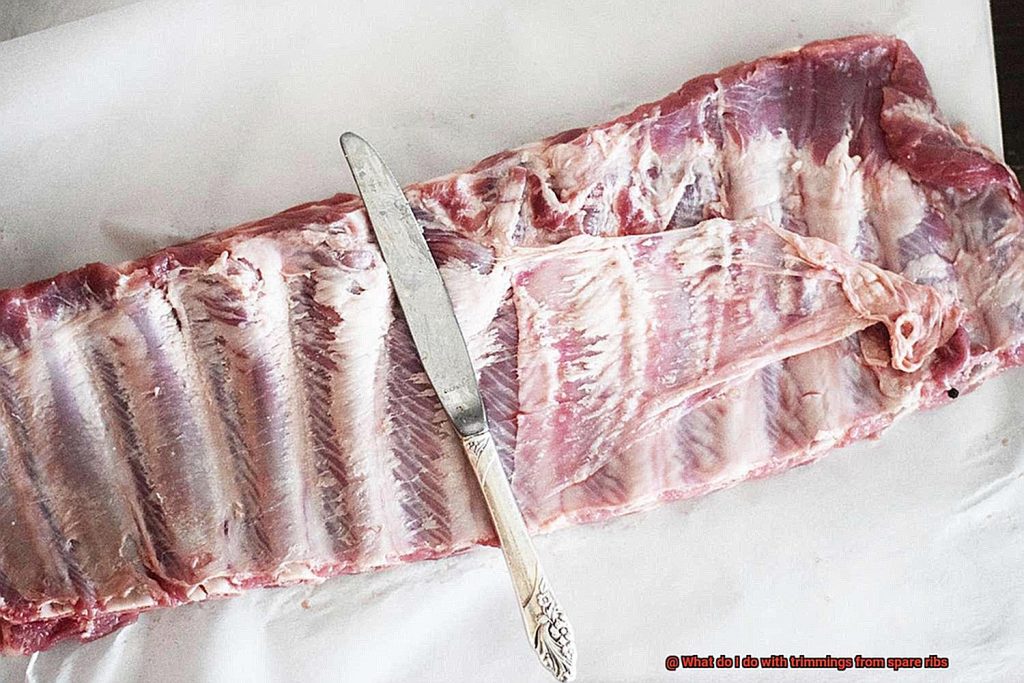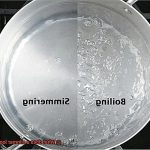Spare ribs are the ultimate meat lover’s dream come true – juicy, tender, and bursting with flavor. But what about those trimmings? It’s easy to feel stumped when faced with these seemingly tricky scraps. Do we toss them out or let them gather dust in the fridge?
Fear not. In this blog post, we’ll show you how to turn those spare rib trimmings into something just as delectable and satisfying. From making rich stock and tangy BBQ sauce to mouth-watering tacos and breakfast hash, these versatile trimmings can be transformed into a whole new level of culinary delight.
Whether you’re a seasoned chef or a kitchen newbie, these spare rib trimming recipes will leave your taste buds begging for more. So why not give those leftovers a second chance? Join us as we explore the fun and creative ways to use those trimmings and bring new life to your leftover ribs. Let’s dig in.
Contents
Making a Flavorful Broth or Stock
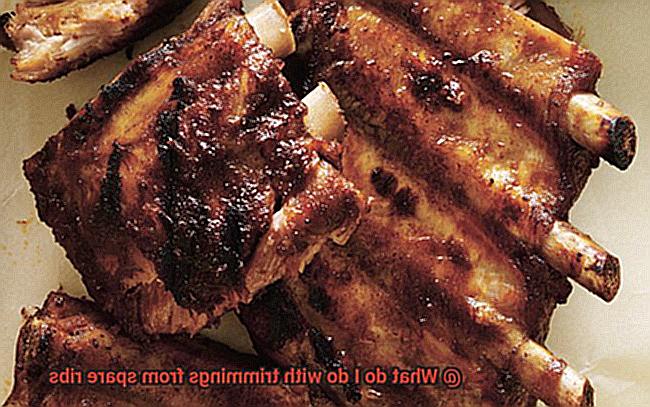
If you’re looking to add a burst of flavor to your dishes, spare rib trimmings are a great starting point. These leftover bones, cartilage, and meat scraps can be transformed into a delicious and savory broth or stock that can elevate any recipe.
To begin, gather all of your spare rib trimmings, both fresh and leftover. Roasting the fresh trimmings in the oven at 400 degrees Fahrenheit for 20-30 minutes until they are browned and caramelized is key to unlocking their rich flavors.
Next, toss all of the trimmings into a large stockpot along with any leftover vegetables like onions, celery, and carrots. For even more flavor, herbs like thyme, parsley, or bay leaves can be added too. Cover everything with water and bring it to a boil over high heat. Reduce the heat to low and let it simmer for several hours. This slow cooking process allows each ingredient to meld together and create a luscious broth.
Once the broth is done simmering, strain it through a fine-mesh strainer to remove any solids. This flavorful broth is versatile and can be used in many ways. It makes a great base for soups, stews, or sauces. It can also be used as a substitute for water when cooking grains such as rice or quinoa.
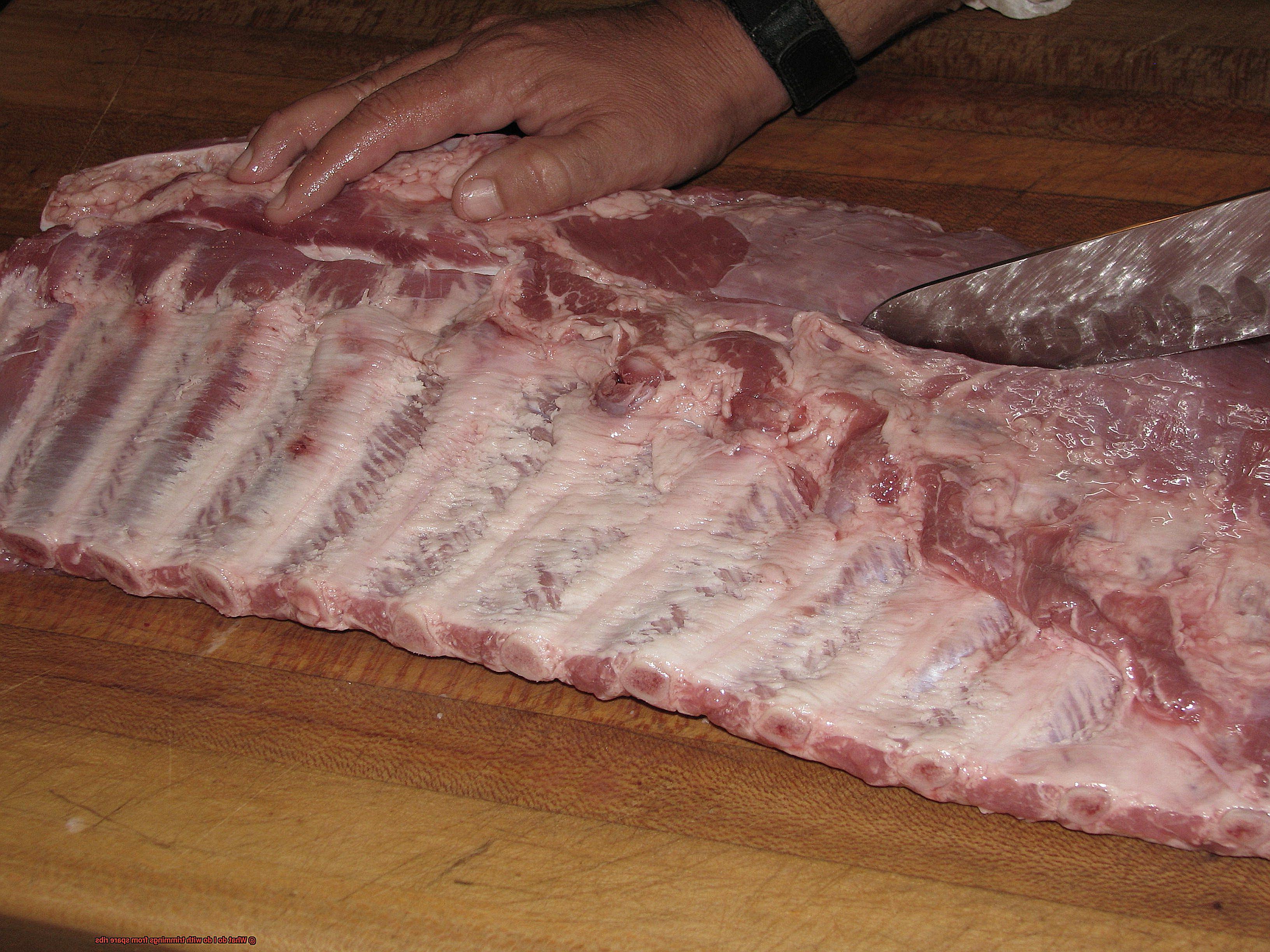
But why stop there? Spare rib trimmings can also be finely chopped and added to dishes like tacos or chili for an added smoky flavor that pairs well with bold spices and hearty ingredients. You can even clean the spare rib bones thoroughly and bake them in a low oven until they are dry and brittle for your furry friend’s enjoyment.
Incorporating the Meat into Other Dishes
Firstly, soups and stews. Who doesn’t love a warm and hearty bowl of soup or stew on a chilly day? Spare rib trimmings can be used as a perfect flavoring agent in soups and stews. Simply add them to the pot, along with other ingredients, and let them simmer for hours. As the soup or stew cooks, the flavor of the trimmings will infuse into the broth, adding a rich and savory taste.
Another great way to use spare rib trimmings is by adding them to fried rice or stir fry dishes. The meat adds a burst of flavor and texture that perfectly complements other ingredients in the dish. Take it up a notch by marinating the spare rib trimmings in a mixture of soy sauce, garlic, and ginger before tossing them in your stir fry.
Spare rib trimmings can also be used to make homemade stock or broth. Simmer the trimmings with vegetables and herbs for several hours to create a rich and flavorful base for soups and sauces. You could also use this stock as a cooking medium for grains like quinoa or couscous.
If you’re craving something more adventurous, why not use spare rib trimmings to make your own sausage or meatballs? Grind the meat in a food processor or meat grinder and mix it with spices and other ingredients before shaping it into patties or balls. This is an excellent way to utilize all parts of the animal while also creating delicious and unique dishes.
Using the Bones for Homemade Dog Treats
Well, have no fear because using those bones to make homemade dog treats is a great way to repurpose what would otherwise be thrown away. Not only does this reduce waste, but it also provides a healthy and tasty treat for your furry friend.
To ensure the safety of your dog, it’s important to remove any excess fat or meat from the bones before using them. This can help prevent any digestive issues for your pup. Once the bones are cleaned, they can be boiled or baked to make them safe for consumption. Boiling the bones for a few hours will create a flavorful broth that can be added to your dog’s food to enhance its taste.
When it comes to giving your dog the treat, it’s crucial to monitor them while they enjoy it. It’s important to ensure that they don’t choke on any small pieces of bone and limit the amount they consume to avoid any constipation or other digestive issues.
If you’re looking to elevate your bone treat game, try brushing them with a mixture of peanut butter and honey before baking. This will create a tasty and nutritious treat that your dog will love.
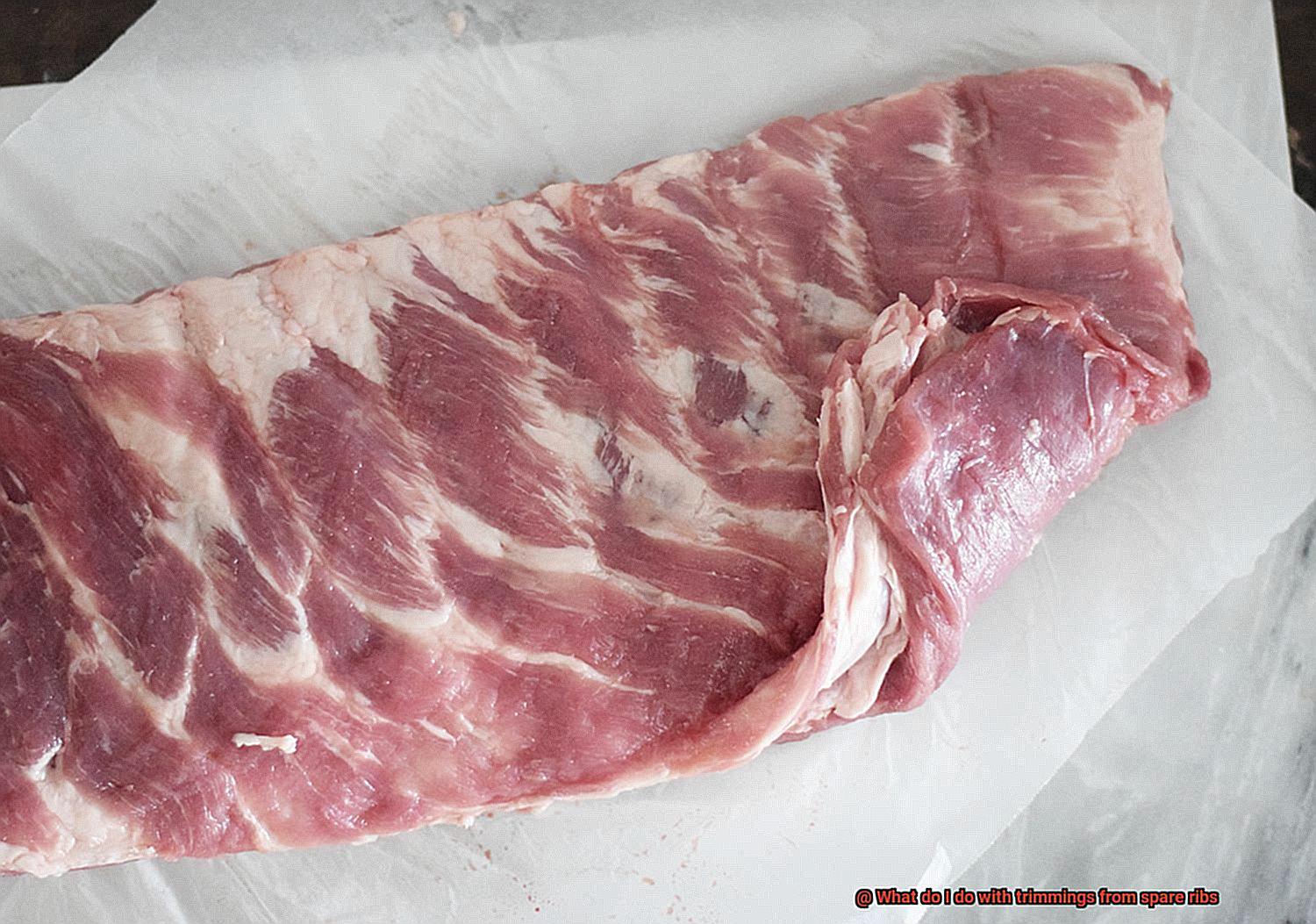
Tips for Preparing Spare Rib Trimmings
Don’t let those flavorful spare rib trimmings go to waste. With these tips, you’ll be able to turn them into a versatile ingredient that can be used in a variety of dishes. Here are five sub-sections to help you prepare the perfect spare rib trimmings.
Trim the Excess Fat:
Before cooking, it’s crucial to remove any excess fat or gristle from the trimmings. This will ensure that the meat is tender and flavorful. Use a sharp knife to remove any unwanted bits, leaving only the juicy and meaty parts.
Marinate for Extra Flavor:
Spare rib trimmings are smaller and thinner than the actual ribs, so they can absorb flavors more quickly. Consider marinating them for at least an hour before grilling or roasting them. A mixture of soy sauce, honey, garlic, and ginger is a great option. The longer you marinate them, the more flavorful they’ll become.
Slow Cook for Tender Meat:
For tender and flavorful meat that falls off the bone, slow cook your spare rib trimmings in a crockpot or Dutch oven. Add vegetables and seasonings to create a rich and savory broth. The low and slow cooking process will result in juicy and flavorful meat that’s perfect for stews, soups, and casseroles.
Grill for Crispy Texture:
Grilling your spare rib trimmings is a fantastic option for those who love a crispy and charred texture. Season them with your favorite rub or marinade and grill them until they’re crispy on the outside. This is a great way to enjoy the flavor of spare ribs without committing to a full rack.
Make Homemade Broth:
Boiling the spare rib trimmings with onions, carrots, and celery will result in a delicious homemade broth that’s perfect for soups, stews, and casseroles. The collagen in the meat and fat will help thicken the broth and add richness to the dish. This is a great way to use every part of the spare ribs and get the most out of your ingredients.
Benefits of Reusing Spare Rib Trimmings
Don’t let those flavorful pieces go to waste. As an expert in culinary arts, I can tell you that spare rib trimmings have several benefits that are often overlooked.
Firstly, simmering the rib bones and cartilage with aromatics such as onions, garlic, and herbs can create a rich and flavorful broth. This broth can be used as a base for soups, stews, or sauces, adding a depth of flavor that will elevate any dish. Not only does it taste great, but it’s also an excellent way to reduce food waste and get the most out of your ingredients.
Secondly, spare rib trimmings can be used as a seasoning or rub for other meats. The blend of spices and herbs used in the seasoning of the ribs can be applied to other cuts of meat such as chicken or pork. This not only adds flavor but also helps to tenderize tougher cuts of meat. By reusing these trimmings in this way, you’ll be able to stretch your food budget further and experiment with new flavors.
Finally, spare rib trimmings can be ground up and used as a topping for pizzas or added to pasta dishes for an extra burst of flavor and texture. The crispy bits of meat and fat add a nice crunch to dishes and are an excellent way to use up any leftover trimmings.
Different Ways to Store Trimmings for Later Use
Spare rib trimmings are a tasty and valuable part of any barbecue feast. If you’re wondering how to store them for future use, there are several methods to consider. Here are five sub-sections that explain the different ways to store spare rib trimmings for later use:
Refrigeration
The fridge is a great option if you plan to use the trimmings within a few days. To keep them fresh and flavorful, wrap them tightly in plastic wrap or aluminum foil and place them in an airtight container. This will prevent them from drying out and becoming tough.
Freezing
For longer storage, freeze the trimmings in a freezer-safe bag or container. Label the bag with the date and contents so you can easily identify them later. When you’re ready to use the trimmings, thaw them overnight in the fridge.
Vacuum sealing
This method is perfect for longer storage and prevents freezer burn. Use a vacuum sealer to seal the trimmings in a bag and store them in the freezer. This will keep them fresh and flavorful for up to six months.
Canning
Canning is an excellent option for those who want to preserve food sustainably without refrigeration or freezing. However, it requires specialized equipment and knowledge, so it may not be suitable for everyone. Sterilize jars and fill them with heated trimmings before sealing and processing according to canning guidelines.
Dehydration
By removing as much moisture from the trimmings as possible, you can store them for an extended period without refrigeration or freezing. Place them in a dehydrator or oven on low heat until completely dry. Store in an airtight container until ready to use.
Recipes Featuring Repurposed Spare Rib Trimmings
Don’t let them go to waste. Instead, let’s explore some delicious recipes featuring repurposed spare rib trimmings that will leave your taste buds begging for more.
First up, we have the classic barbecue sauce. Slow-cook those trimmings with onions and other veggies until they’re falling off the bone. Then, blend them with your favorite barbecue sauce for a rich and savory flavor. This sauce is perfect as a marinade or dipping sauce for grilled meats or served alongside your favorite barbecue dishes.
But wait, there’s more. Spare rib trimmings can also be used to make a hearty pot of soup. Boil those trimmings with veggies and seasonings until the meat is tender, then strain the broth and add in your favorite soup ingredients such as beans or noodles. This flavorful soup is perfect for cold winter days or as a comforting meal any time of year.
If you’re in the mood for something simple yet satisfying, try making a sandwich. Chop up the meat and mix it with your favorite mayonnaise-based dressing, then serve on toasted bread with lettuce and tomato. It’s a quick and easy lunch or snack that will leave you feeling satisfied.
Feeling more adventurous? How about making a spicy stir-fry? Sauté the meat with garlic, ginger, and your favorite veggies. Add soy sauce and chili paste for a flavorful and satisfying meal that will spice up your taste buds.
But why stop there? Spare rib trimmings can also be used to make casseroles, stews, and even tacos. The possibilities are endless when it comes to repurposing these tasty leftovers.
Common Mistakes When Working with Spare Rib Trimmings
Spare ribs are a popular barbecue food, but they often leave you with some leftover trimmings. These trimmings are versatile and can be used in several dishes, so it’s essential not to waste them. However, there are a few common mistakes that people tend to make when working with spare rib trimmings. Here are some tips to help you avoid these mistakes and make the most out of your leftovers.
Don’t Throw Them Away.
The biggest mistake people make is simply throwing away their spare rib trimmings. These flavorful pieces can make a delicious addition to soups, stews, or even as a pizza topping. Don’t let them go to waste; use them in creative and delicious ways.
Trim Evenly
Another common mistake is not trimming the spare ribs evenly before cooking. Uneven cooking will make it difficult to use the trimmings later on. To avoid this, make sure to trim the ribs evenly before cooking so that you have good quality trimmings to work with. This will also ensure that your ribs cook evenly.
Store Properly
Storing your spare rib trimmings properly is essential if you’re not going to use them right away. An airtight container in the refrigerator or freezer is the best way to keep them fresh for longer periods of time. This will help prevent them from going bad and give you more time to decide what to do with them.
Choose the Right Recipes
Spare rib trimmings can be used in a variety of dishes, but it’s important to choose recipes that complement their unique flavor and texture. Use them in dishes that require slow cooking, like chili or pulled pork sandwiches. Be careful not to overcook them as they can become tough and dry if cooked for too long.
Get Creative.
Spare rib trimmings are a great way to add flavor to your dishes. Try using them in tacos, casseroles, or even as a filling for dumplings. The possibilities are endless when it comes to using spare rib trimmings, so get creative and see what delicious meals you can whip up.
lOR4M6NQYgc” >
Conclusion
To sum it up, spare rib trimmings are a precious commodity that can be utilized in countless ways. Whether you’re whipping up a savory stock or crafting a zesty BBQ sauce, these scraps are brimming with potential. You can even transform them into tantalizing tacos or breakfast hash for an unforgettable meal.
However, there are some common mistakes to avoid when working with spare rib trimmings. Don’t toss them out, fail to trim them evenly before cooking, store them improperly, choose unsuitable recipes, or overcook them. Instead, experiment with new and exciting dishes that showcase their unique flavor and texture.
With the tips and tricks shared in this article, you’ll be able to elevate your spare rib trimmings to the same level of deliciousness as the ribs themselves. Don’t let those delectable pieces go to waste – give them a second chance and breathe new life into your leftover ribs. You might even consider using them as toppings for pizzas or adding them to pasta dishes for an extra burst of flavor.
In short, spare rib trimmings have endless possibilities if you approach them with creativity and care.

